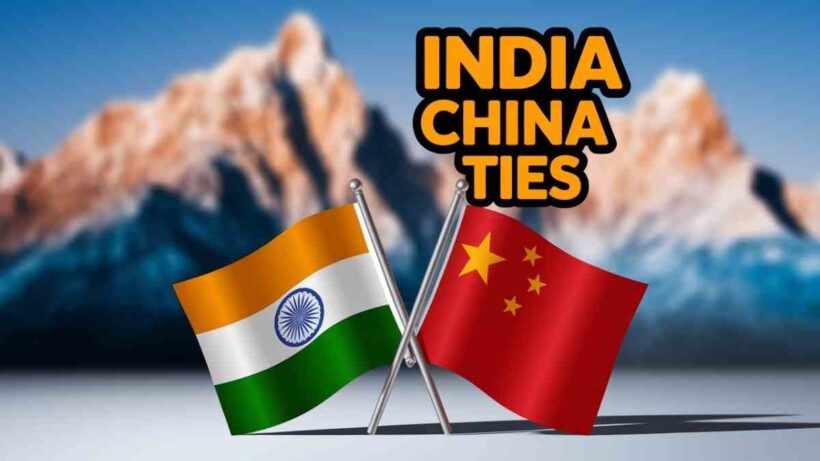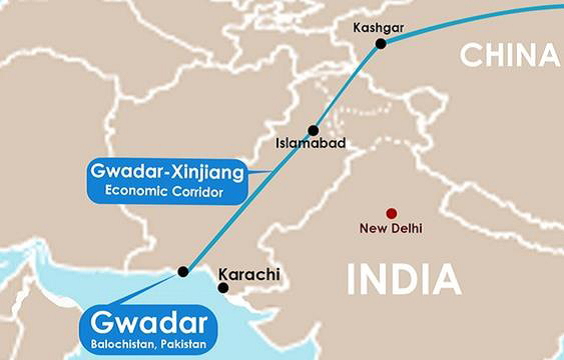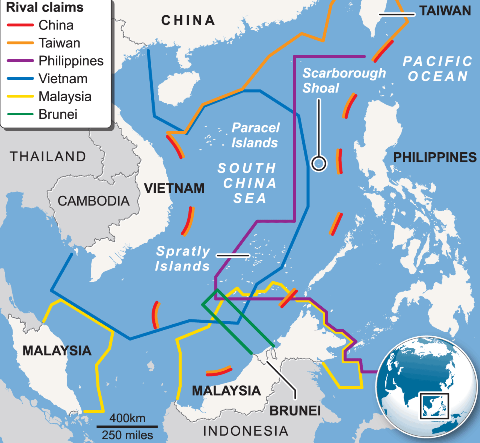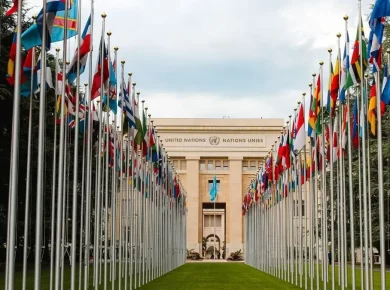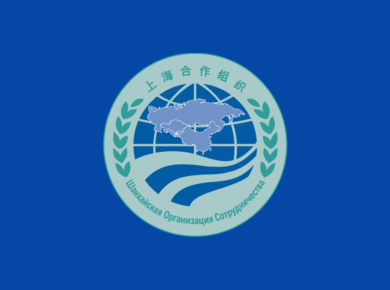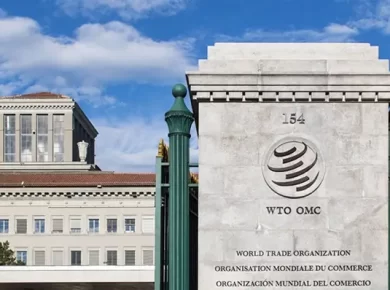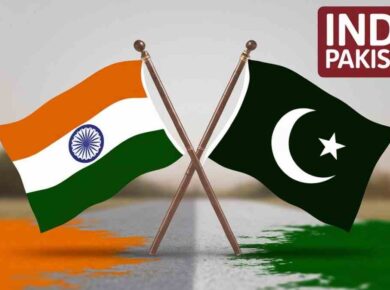India China Relations
India & China, both the countries started off on cordial note post independence with signing of Panchsheel. However the relations turned cold post 1962 war which created mistrust between the two countries since then. Both the countries have similar attributes and problems including large population, huge rural-urban divide, rising economy and conflict with neighbours.
Major irritants
- Border Disputes – Share about 3,488-km long border which is yet to be fully delineated.
- India supports a Tibetan gov. in exile formed by Dalai Lama, unacceptable to china. China recently opposed to the Dalai Lama’s visit to Arunachal Pradesh, particularly Tawang, which it considers as Southern Tibet.
- China began the practice of issuing stapled visa to residents of AP and J & K, though it stopped it for J & K but continues for AP.
- China has an undeclared policy of String of Pearls to encircle India, which involves building of ports and naval bases around India’s maritime reaches. While India has been trying to develop closer arrangements with the countries surrounding China viz. Japan, South Korea & Vietnam
- China has been building dams in Tibet part of Brahmaputra. India has objected to it but there has been no formal treaty over sharing of the Brahmaputra water.
- China has been blocking India’s attempt to entry to NSG & has also blocked India’s attempt at the UN for sanctions against Jash-e-Mohammad chief Masood Azhar.
- India considers building of the CPEC as China’s interference in India’s sovereignty and territorial integrity.
- Trade imbalance with the imbalance skewed in China’s favour viz. $46.56 billion in 2016
Border Dispute India China
Western Border Dispute – Johnson’s line shows Aksai Chin to be under Indian control whereas the McDonald Line places it under Chinese control. Line of Actual Control separates Indian-administered areas of J & K from Aksai Chin & is concurrent with the Chinese Aksai Chin claim line. China and India went to war in 1962 over disputed territory of Aksai Chin. India claimed this was a part of Kashmir, while China claimed it was a part of Xinjiang.
Eastern Border Dispute: China considers the McMahon Line illegal and unacceptable claiming that Tibet had no right to sign the 1914 Convention held in Shimla which delineated the Mc Mahon line on the map – Thus claims parts of Arunachal Pradesh – India and China have held 19 rounds of Special Representative Talks on the border and there has yet to be an exchange of maps.
Also read: India Russia Relations and India Bhutan Relations
China Pak Axis
- Higher than the mountains, deeper than the oceans, sweeter than honey
- China is Pakistan’s great economic hope and its most trusted military partner
- Pakistan lies at the heart of China’s geostrategic ambitions i.e. New silk road connecting the energy fields of the Middle East and the markets of Europe to China
- China opposed India’s admission into permanent seat of UNSC, & insisted for Pakistan
- CPEC – will connect Kashgar in China’s Xinjiang province with the port of Gwadar
- Military and nuclear arms support by China in the past besides economic support
- China‘s has been shielding Pakistan’s terrorist outfit chief, Massod Azhar from being listed as a ‘Global Terrorist’ by the UN.
OBOR – Will Connect Asia, Africa, Middle East & Europe
- Three main goals of China are:
- Economic diversification
- Political stability and the
- Development of a multipolar global order
- All of India’s neighbours, except Bhutan, sent highlevel delegations for the summit.
India’s Objection to OBOR
- Projects in the Gilgit-Baltistan region, ignoring India’s “sovereignty and territorial integrity”.
- Lack of transparency in China’s agenda, New Delhi believes that it is not just an economic project but one that China is promoting for political control
- Smacks of Chinese neo-colonialism – Could push smaller countries on the road into a crushing debt cycle, destroy the ecology and disrupt local communities.
- India fears that CPEC, passing through the Pakistan controlled Kashmir, would serve the purpose of granting legitimacy to Pakistan’s control over the region, and by promoting the construction of the corridor, China intends to meddle in the Kashmir dispute.
- Indian security experts also fear that after gaining access to Gwadar port, the Chinese will find it easy to sail into the Indian Ocean.
India’s decision to skip the meeting came after a year of bilateral discord over China’s stubborn opposition to India’s entry into the NSG and a UN ban against Pakistan-based terrorist group Jaish-e-Muhammad leader Masood Azhar. The decision to not attend even as an observer, however, effectively closes the door for diplomacy. Expert believe that by boycotting the Beijing meet, India was denying itself unending benefits of something as big as OBOR for ex. infrastructural shortcoming that it is facing currently. Meanwhile India & Japan have come up with Asia Africa Growth Corridor to counter China’s OBOR.
Also read: India Pakistan Relations and India Japan Relations
The Baloch Angle
Gwadar is located in Baluchistan, & Baloch are against CPEC because they claim that the CPEC’s benefits will not flow to them. They further state that CPEC is not an economic project. Pakistan and China together are building a military infrastructure in Balochistan’s coastal areas.
The purpose is to strengthen their military supremacy in the region which will undermine the stability of the region. A fear of a massive inflow of migrants from different areas of Pakistan which will change the demography of Balochistan and reduce the Baloch people to a permanent minority in their historic homeland.
South China Sea Dispute
New islands were constructed by dredging sand onto reefs, an effort by China to boost its claim to all of the Spratly Islands in the South China Sea. It has also built ports, Runaways and radar facilities on the manmade islands. satellite images of the islands, show that China now appears to have installed large antiaircraft guns and weapons systems as well – Paracel and Spratly islands.
- China rejected an international ruling on the South China Sea as “null and void” and devoid of any “binding force”.
- China’s development in the region is seen as threatening to other nations Taiwan, Brunei, Philippines and Malaysia.
- About half of the world’s annual merchant fleet tonnage – passed through the South China Sea in 2010. Any tension in the region may immensely affect the international trade and economy
- China has demonstrated a desire to control all of the passage through what it considers its sphere of naval power. This predilection is in direct opposition to the U.S.-backed global standard of free passage through the high seas.
India has made it clear that it recognised that the tribunal had been set up within the jurisdiction of the UN’s Convention on the Law of the Sea (UNCLOS) that must be given the “utmost respect”. As part of a soft-diplomacy effort, India is looking to have South China Sea countries such as Vietnam, Malaysia and Philippines use the tsunami early warning-system developed by India.
Doklam Plateau Face-off
Indian troops intervened to block the path of Chinese People’s Liberation Army soldiers engaged in building road-works on the Doklam plateau, a strategically vital 269 sq. km. patch of Bhutan’s territory that Beijing laid claim to.
- This is the first time that India used troops to protect Bhutan’s territorial interests.
- Earlier China have made Bhutan a “package deal” under which the Chinese agreed to renounce their claim over the 495-sq.-km disputed land in the Northern Bhutan, in exchange for disputed land of Doklam plateau.
India’s concern
- The construction of a new road through the Chumbi valley would further endanger the “Chicken’s Neck” – the narrow Siliguri corridor links the north-east with the rest of India
- India has conveyed to the Chinese government that the latter’s construction of road in the disputed Doklam area ‘would represent a significant change of status quo with serious security implications for India.’
- India is vulnerable in this corridor as it is the only access point to the northeast. The Corridor is about 500 km from the Chumbi Valley.
Chinese reaction
- Following the tensions, Chinese authorities have closed the Nathu La pass to Kailash Mansarovar pilgrims.
- China served notice on India to withdraw its forces, as a precondition for a “meaningful dialogue” – unacceptable to India, unless the PLA also withdraws its troops and road-building teams.
- China has long desired an independent Bhutanese stand without Indian advocacy and interference on the boundary issue. Chinese academia often dubbed India’s interference as hegemony in South Asia.
- By challenging Bhutanese security, Beijing hoped to put a strain on the India-Bhutan “special relationship”.
India & China mutually disengaged their Troops
- The end of Dokalam standoff is a huge political, diplomatic & moral victory for India. It will contribute to raising the stature of the country. The fact that the Indian government stayed steadfast and resolute in the face of extreme provocation, speaks volumes of the determined and decisive approach of the present government.
- The episode has significantly established the image of India as a responsible, decisive and reliable actor on the global scene.
- The episode has contributed to further strengthen relations between India and Bhutan. The message to India’s neighbourhood is also positive and reassuring.
- However India and China should not see Doklam in terms of point-scoring but rather as a warning of the need for extending their border management framework across other borders as well.
- Stronger economic and commercial partnership between the two countries can be a win -win scenario for both the countries if China removes its non-tariff barriers against Indian products and services.
- India must necessarily “hope for the best, and prepare for the worst”, when it comes to tensions with its northern neighbour.
Advertisement: World’s fastest hosting – secure, reliable, limited-time offer! Click now!
Deterioration of India-China relation
- Delhi has expressed disappointment over China’s rejection of its concerns on sovereignty issues, and refusal to corner Pakistan on cross-border terrorism or help India’s bid for NSG membership.
- In turn, India’s spurning of the OBOR Initiative and cooperation with U.S. on maritime issues has not played well in China
- Dalai Lama visit to Tawang was strongly protested by China – it accused India for fuelling secessionist in Tibet.
- India is also working with Japan, South Korea and the US to contain China’s power in the Indian Ocean provoking China
Cooperation between India and China
- Both members of BRICS, which is now establishing a formal lending arm, the New Development Bank.
- India, a founding member of the China-backed Asian Infrastructure Investment Bank.
- China welcomed India’s full membership of Shanghai Cooperation Organization.
- Both countries have advocated democratization of international institutions such as World Bank, IMF
- China and India have similar stand during WTO negotiations.
- China and India, being the main targets of criticism by the US and its friends, have so far successfully coordinated their strategies in the environmental summits
Way forward for India
- Necessary to build up economic and security capabilities and begin to close the power gap with China.
- India’s foreign policy formulations on China and Pakistan need no longer be considered as separate instead one hyphenated strategic entity.
- Time for India to join hands with Japan, US and EU to promote alternatives to Chinese economic exploitation.
- India should aggressively pursue ‘Cotton Route’, Project Mausam and Spice Route to strengthen economic ties between countries in the Indian Ocean rim.
- Bring into action planned strategic Asia Africa Growth Corridor with the help of Japan.
Most of its neighbours have been adept at playing the “China card” against India’s alleged “hegemony”, and China has been quick to exploit this to its advantage. Its strategy has been to bottle up India in the subcontinent, but India can defeat this strategy of China by mending fences with the neighbours and by convincing them that it has no hegemonic ambition.
For more updates, explore the IR & Security Category. Feel free to share your thoughts and comments
If you’re passionate about building a successful blogging website, check out this helpful guide at Coding Tag – How to Start a Successful Blog. It offers practical steps and expert tips to kickstart your blogging journey!
